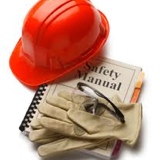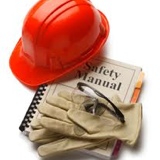Information
-
Audit Title
-
Document No.
-
Client / Site
-
Conducted on
-
Prepared by
-
Location
-
Personnel
-
Instructions for completion: 1.Complete form specific to area 2.Enter Yes, No, Not applicable to each question-add remarks or enter media on items that need to be addressed. 3.Transfer all "No" responses and comments to the Rectification Action Plan (RAP) Completed Checklist a) Export to desktop b) Export both the audit and RAP to Senior H &S Coordinator once completed.
1.0 - Previous inspection
-
1.1 - Has the last inspection been reviewed?
-
1.2 - Are there no outstanding actions?
2.0 - Fire Prevention
-
2.1 Are evacuation maps prominently displayed and up to date?<br>
-
2.2 - Are emergency phone numbers displayed?<br>
-
2.3 - Extinguishers in place, clearly marked for type of fire?
-
2.4 - Extinguishers recently serviced? (Check 6 monthly punch mark on tabs.)
-
2.5 - Extinguishers clear of obstructions?
-
2.6 - Extinguisher no more than 1200 mm max height & base not lower that 100 mm?
-
2.7 - Have fire wardens been assigned for the building and name/contact details displayed?<br>
-
2.8 - Adequate direction notices for fire exits?
-
2.9 - Exit doors easily opened from inside?
-
2.10 - Exits clear of obstructions?
-
2.11 - Are amounts of combustible material kept to a minimum and stored appropriately?
3.0 - General Lighting
-
3.1 - Good natural lighting?
-
3.2 - Reflected light from walls & ceilings not causing glare to employees?
-
3.3 - Light fittings clean and in good condition?
-
3.4 - Emergency exit lighting operable?
4.0 - Building Safety
-
4.1 - Floor surfaces even and uncluttered?
-
4.2 - Entry and walkways kept clear?
-
4.3 - Walkways adequately and clearly marked?
-
4.4 - Intersections kept clear of boxes etc?
-
4.5 - Stair and risers kept clear?
-
4.6 - Are all external areas, pedestrian access and precincts free from clutter, rubbish,redundant materials or other obstacles which may constitute a slip, trip or fall hazard?
-
4.7 - 4.11 - Loading area clean and tidy?<br>
-
4.8 -
5.0 - Work Benches
-
5.1 - Clear of rubbish?
-
5.2 - Tools not in use kept in place?
-
5.3 - No damaged hand tools in use?
-
5.4 - No damaged power tools in use?
-
5.5 - Work height correct for the type of work and the employee?
-
5.6 - No sharp edges?
6.0 - Rubbish Removal
-
6.1 - Bins located at suitable points around site?
-
6.2 - Bins emptied regularly?
-
6.3 - Oily rags and combustible refuse in covered metal containers?
7.0 - Storage Design and Use
-
7.1 - Materials stored in racks and bins wherever possible?
-
7.2 - Storage designed to minimise lifting problems?
-
7.3 - Floors around racking clear of rubbish?
-
7.4 - General condition of racks and pallets?
8.0 - Machines
-
8.1 - Has a register of plant been established,and has it been updated within the last year?
-
8.2 - Have risk assessments for major plant and equipment been conducted?
-
8.3 - Are the floors around machines kept clean and adequate work space at each machine?
-
8.4 - Are JSA's and SOP's with each machine and up to date?
-
8.5 - Have nip points, V- drives, chain drives been adequately guarded on machines. Eg Compressors.
-
8.6 - Have quick stops on rotating parts or blades been fitted, and are they in good working order?
-
8.7 - Are guards adequate for transmissions, gears, pulleys, belts, ,chain drives, guillotines, presses etc?
-
8.8 - Are emergency shutdown switches located within easy access of the operator, clearly marked and coloured in RED?
-
8.9 - Are machines adequately locked out when not in use?<br>
-
8.10 - Is there a logbook for significant plant and equipment ?
-
8.11 - Are maintenance actions recorded in equipment logbooks/ registers?
-
8.12 - Operators trained/inducted into the operation of the machines?
-
8.13 - Is the training recorded?
-
8.14 - Is there a system for planning/ scheduling equipment maintenance?
-
8.15 - Are lockout procedures implemented and followed?
-
8.16 - Are walkways clearly marked and unobstructed around fixed plant and machinery?
-
8.17- Is there adequate signage in the work area?
-
8.18- Have staff received training in the safe use of plant and equipment?
-
8.19- Are hearing protection areas clearly designated by signs, labelling of machines or other appropriate means?
-
8.20- Is there a risk to staff/ students from exposure to noise?<br> Has an assessment of that exposure been made?<br> Is the assessment available in that area?
-
8.21- Has audio metric testing been completed for employees who are required to wear hearing protectors to control exposure to noise?
-
8.22- Are staff trained in noise to exposure and hearing protection?f
9.0 - Electrical Safety
-
9.1 - Are power boards with overload safety switches used?
-
9.2 - Safety switches tested every 6 months and tests recorded?
-
9.3 - Are liquids, chemicals and gasses stored away from electrical outlets of items?
-
9.4 - Portable equipment tested and tagged?
-
9.5 - No broken plugs, sockets or switches?
-
9.6 - Are leads secured and not potential trip hazards?
-
9.7 - No frayed or damaged leads?
-
9.8 - No strained leads?
-
9.8- Are electrical leads kept away from areas that could cause damage to the lead, such as hot surfaces, sharp edges and doorways?
-
9.10 - Are main distribution boards signed, kept closed, kept free from obstruction?
10.0 - Chemical Safety
-
10.1 - Hazardous Substance Register complete and updated within the last 12 months and available?
-
10.2 - Material Safety Data Sheets available for all chemicals?
-
10.3 - Risk assessments completed for hazardous substances and reviewed in the last 5 years?
-
10.4 - All containers labelled correctly?
-
10.5 - Do staff have access to ChemWatch and receive training in its use?
-
10.6 - Are chemicals, hazardous substances and dangerous goods stored in the correct cabinets and away from food products?
-
10.7 - If applicable are special storage conditions followed?
-
10.8 - Workers trained in the use of hazardous substances?
-
10.9 - Is the appropriate type of PPE available for chemicals used?
-
10.10 - Is adequate ventilation provided?
-
10.11 - Are eye washes and showers easily accessed?
-
10.11- Is absorbent material for chemical spills available?
11.0 Ladders
-
11.1 - Are all ladders Industrial strength? (Non Household rated, check label.)
-
11.2 - Are ladders in good condition?
-
11.3 - If used for electrical work are they non conductive? (Wood or fibre glass.)
-
11.4 - Used according to instructions?
12.0 - First Aid Facilities
-
12.1 - Are cabinets and contents clean and orderly?
-
12.2 - Are contents regularly checked?
-
12.3 - Has a first aid cabinet caretaker been assigned?
-
12.4 - Cabinets clearly labelled?
-
12.5 - Is there easy access to cabinets?
-
12.6 - Employees aware of location of first aid cabinet?
-
12.7 - Are first aid officers accessible and their details up to date?
-
12.8 - Are emergency numbers displayed?
-
12.9- Are the names and contact details of the local HSA and HSR prominently displayed?
13.0 - Office Hazards
-
13.1 - Condition of filing cabinets?
-
13.2 - Condition of chairs? (Five star bases.)
-
13.3 - Desks in good condition? (No damage.)
-
13.4 - Screen Based Equipment positioned to reduce glare from windows etc?
-
13.5 - Photocopiers positioned to avoid fumes?
-
13.6 - Tasks designed to prevent Occupational Overuse Syndrome? (Breaks included.)
-
13.7 - Air conditioning systems regularly maintained?
-
13.8 - Stable non-slip floor coverings in good condition?
14.0 - Personal Protective Equipment ( PPE )
-
14.1 - Are the PPE for the work area clearly displayed?<br>
-
14.2 - Is PPE provided where necessary,eg gloves,face shield, respirators,hearing protection,safety glasses?
-
14.3 - Is PPE worn correctly when required?
-
14.4 - Have staff/ students been trained in the right use of and selection of PPE?
-
14.5 - Is PPE stored and maintained correctly?
-
14.5- Is policy on enclosed foot ware being enforced?
-
14.7 - Is protective clothing adequate for the tasks being performed?
-
14.8 - Are disposable respirators adequate for the tasks being performed? ( P1/P2 )<br>
-
14.9- Are respirators/replacement cartridges within "use by" limits?
15.0- Dangerous Goods
-
15.1- Is the quantity of flammable liquids held for use kept to the minimum possible?
-
15.2- Are 'No Smoking' and 'No Naked Flame' signs displayed in the appropriate areas?
-
15.3- Is the allowable quantity of flammable liquids held in approved safety containers?
-
15.4- Is a manifest of dangerous goods kept and available?
-
15.5- Are there HAZCHEM / warning notices indicating the presence of flammable liquids/ dangerous goods where appropriate?
16.0-Compressed gas/air
-
16.1- Are cylinders stored in well ventilated areas and are they properly segregated?
-
16.2- Are cylinders adequately secured? Eg. Individually chained.
-
16.3- Are empty cylinders stored separately from full cylinders and are they adequately signed?
-
16.4- Are air receivers and compressors installed with pressure gauges and relief valves?
-
16.5- Are all hard lines labelled correctly?
17.0- Painting
-
17.1-Do spray painting facilities and operations comply with the relevant requires and standards concerning spray painting?
-
17.2- Are there written procedures for spray painting?
-
17.3- Is ventilation adequate for the task?
-
17.4- Is respiratory protection properly maintained and used as required?
-
17.5- Is paint and thinners kept to a minimum level and stored in appropriate containers/ cabinets?
18.0- Manual Handling Equipment (MHE)
-
18.1- Is there adequate space for all manual handling tasks:<br>a) bench space for equipment?<br>b) leg space for equipment?<br>c) storage space for equipment not in use?
-
18.2- Are heavy/ awkward objects stored between knee and shoulder height?
-
18.3- Are correct manual handling techniques / equipment used for lifting heavy awkward or unstable items?
-
18.4- Have Manual Handling Risk Assessments been completed for hazardous manual handling tasks?
-
18.5- Have staff involved in manual handling tasks been trained in manual handling techniques?
-
18.6- Is Manual Handling Equipment (MHE) adequate for the task being performed?
-
18.7- Is there a MHE register?
-
18.8- Is MHE correctly maintained and actions recorded in the MHE register? ( Servicing,inspections,repairs)
-
18.9- Are lifting slings clean, in usable condition and correctly marked
-
18.10- Is there a log book for gantries, cranes, lifters and any other major plant or equipment?
-
18.11- Are logbooks correctly maintained and kept up to date?
-
18.12- Is regular/ periodic servicing being conducted?
Sign Off
-
On site representative
-
Auditor's signature







